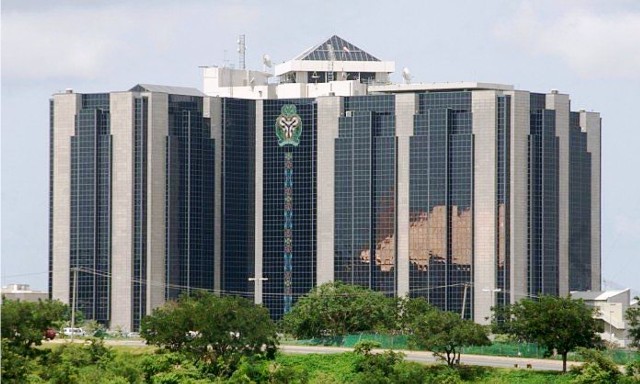Opinion
Still On HIV Transmission
Although the global community is still ensnared by COVID-19, an infection caused by severe acute respiratory syndrome, prior to its emergence, HIV (human immunodeficiency virus), an infection also feared as COVID-19 had been in existence. The former is merely more prominent as it killed with speed and in high numbers which led to a global lockdown, including in Nigeria and altered peoples’ normal way of life with preventive measures and protocols.
HIV is a virus that attacks the body’s immune system and, if not treated, can lead to AIDS (acquired immunodeficiency syndrome). Literally, it currently has no cure. It means that people who get HIV infection will live with it for a lifetime. From WHO statistics (2018), approximately 37.9 million people had AIDS globally. Out of the figure, 1.8 million were children below 15 years. Sub-Saharan Africa got 90 per cent. Within, HIV/AIDS Indicator and Impact Survey (NAIIS) 2018 estimates that there are 1.9 million people living with HIV in Nigeria. The incidence of HIV in 2018 was estimated at 8 per 10,000 persons, whilst prevalence of HIV among adults aged 15-64 years was 1.4 per cent and among children aged 0-14 years, 0.2 per cent.
However, the good news is, from records, people living with HIV (PLHIV) who get effective HIV treatment can live long, healthy, normal lives, and also protect their partners. Hence, with timely detection and disclosure, there’s no cause for alarm.
For instance, a lady; very eloquent, energetic and nice-looking, who was diagnosed HIV-positive about a decade ago, during interactions recently in Calabar, Cross River State, attested to living a normal life despite her status. Not only that she successfully completed her undergraduate programme in a tertiary institution amid the development, with proper medical care, she goes to work freely like any other person, and fascinatingly, in a serious relationship for marriage. She discloses her status to people freely and boldly, according to her, and gives counselling on preventive measures as well as guides on ways to manage the infection if tested positive. Apart from her job in an organisation to make ends meet, she runs an NGO (Non-governmental organisation) for advocacy on HIV/AIDS towards sensitising the public.
This story is affirmative on account of her early detection of the infection; hence her ability to put it under control effectively. Perhaps, her case would have been different if she did not discover the ailment in time. This, therefore, justifies the sense in undergoing diagnosis, particularly running a test for early detection, considering that HIV may begin with diverse symptoms.
For example, depending on peculiarity, some people may have flu-like symptoms within two to four weeks after infection (called acute HIV infection). These symptoms may last for a few days or several weeks. Possible symptoms include: fever, chills, rash, night sweats, muscle aches, sore throat, fatigue, swollen lymph nodes, and mouth ulcers.
On the other hand, some people may not feel sick at all during acute HIV infection which is the first stage. So, these symptoms do not mean people have HIV infection as other illnesses can also cause these same symptoms. Suffice to say that the only way to conclude that it is HIV infection is by undergoing a requisite medical test. Ideally, it is necessary to see a healthcare provider whenever these symptoms occur and also whenever exposed to HIV. Getting tested for HIV is the only acceptable way to be sure. For emphasis, detection can be done with great accuracy using WHO prequalified tests within a nationally approved testing strategy. In Nigeria, presently, people can use self-testing techniques outlined by health experts to determine their HIV status through rapid diagnostic tests that provide accurate and same-day results.
A critical point that cannot be overemphasised is that HIV/AIDS has claimed millions of lives, and still with no cure. And more critical and alarming is the mother-to-child transmission (MTCT) of HIV mostly through breastfeeding, hence preventive measures essentially for women of reproductive age must be placed on the front burner. From report, the National Strategic Plan (NSP) targets that 95 per cent of all HIV positive pregnant and breastfeeding mothers would receive antiretroviral therapy; 95 per cent of all HIV-exposed infants would receive antiretroviral prophylaxis; and 95 per cent of all HIV-exposed infants have early infant diagnosis within 6-8 weeks of birth. This is commendable.
Unfortunately, field observations show that poor access to formal public healthcare; insufficient Prevention of mother-to-child transmission of HIV/AIDS (PMTCT) services; inadequate funding for HIV activities by states; poor data reporting system; low paediatric HIV case identification; poor responses for children living with HIV; ineligible improvement in ANC and facility delivery uptake still stand as barriers. In summary, socioeconomic and socio-cultural factors remain major barriers to the success of PMTCT in Nigeria, today.
It must also be noted that activities that put individuals at greater risk of contracting HIV include: having unprotected sex; having untreated sexually transmitted infection (STI) such as syphilis, herpes, chlamydia, gonorrhea and bacterial vaginosis; and sharing contaminated needles, syringes and other injecting equipment and drug solutions when injecting drugs. Others are receiving unsafe injections, blood transfusions and tissue transplantation, and medical procedures that involve unsterile cutting or piercing; and experiencing accidental needle stick injuries, including, among health workers. And if eventualaly tested HIV-positive, without requisite treatment, it typically, dangerously progresses to Stage 3 (AIDS).
The crux is that the fight against HIV/AIDS demands unremitting efforts. In particular, health and sex education, PMTCT, reduction of pre-natal transmission, screening of blood and blood products need progressive drives. A sustained sensitisation and synergy on HIV/PMTCT for a healthier tomorrow as WHO and UNICEF spearhead is pertinent. As the PMTCT programmes offer a range of services for women of reproductive age living with or at high risk of HIV to maintain their health and prevent their infants from acquiring HIV, access prior to conception, and throughout pregnancy, labour and breastfeeding is indispensable.
By: Carl Umegboro
Umegboro is a public affairs analyst.
Opinion
Ndifon’s Verdict and University Power Reform

Opinion
As Nigeria’s Insecurity Rings Alarm

Opinion
The Girl Who Didn’t Dance
-
Business2 days ago
Shippers Council Vows Commitment To Security At Nigerian Ports
-

 Business2 days ago
Business2 days agoNigeria Risks Talents Exodus In Oil And Gas Sector – PENGASSAN
-

 Business1 day ago
Business1 day agoCBN Revises Cash Withdrawal Rules January 2026, Ends Special Authorisation
-
Business2 days ago
NCDMB, Others Task Youths On Skills Acquisition, Peace
-

 Business1 day ago
Business1 day agoFIRS Clarifies New Tax Laws, Debunks Levy Misconceptions
-

 News1 day ago
News1 day agoTinubu Swears In Christopher Musa As Defence Minister
-

 Women2 days ago
Women2 days agoRIVERS NAWOJ AND PHACCIMA PARTNER TO STRENGTHEN MUTUAL GOALS
-

 Politics1 day ago
Politics1 day agoTinubu Increases Ambassador-nominees to 65, Seeks Senate’s Confirmation

